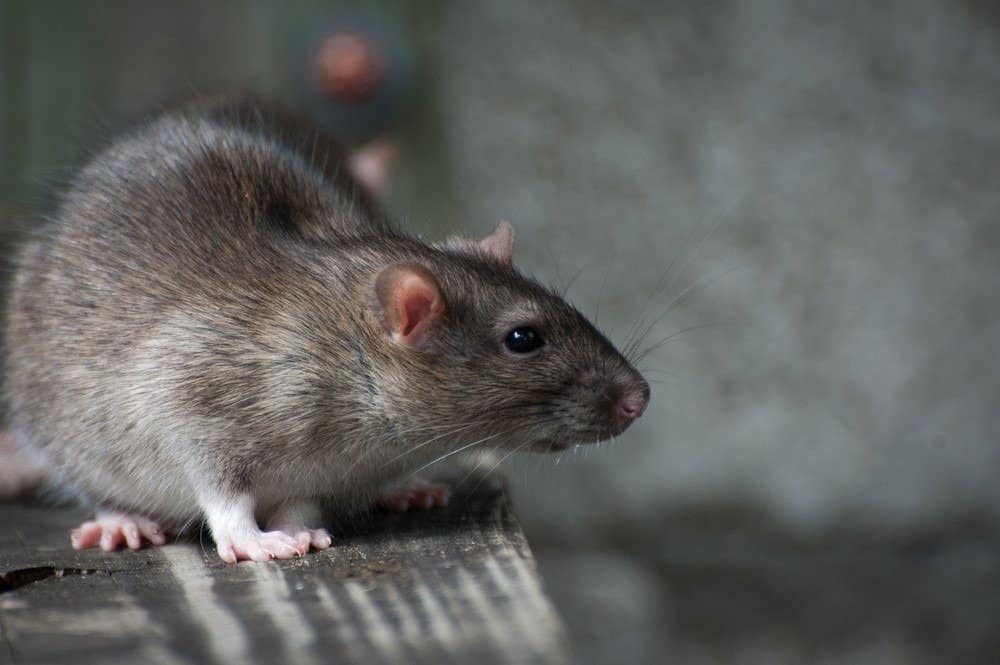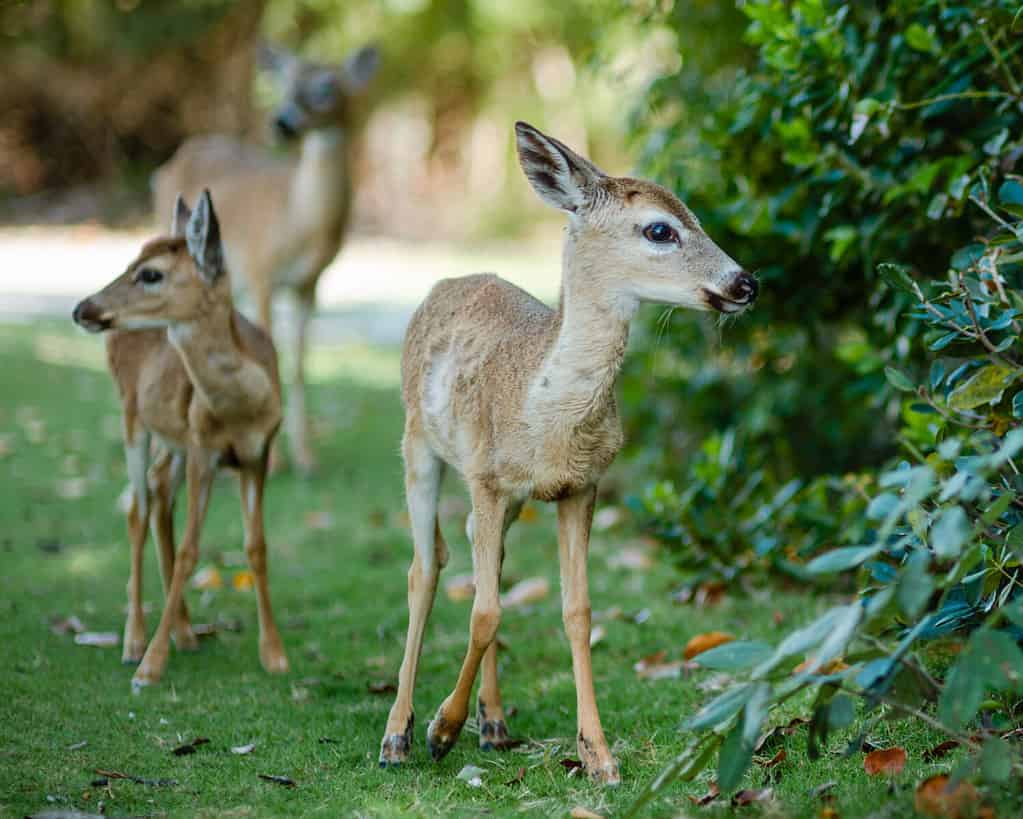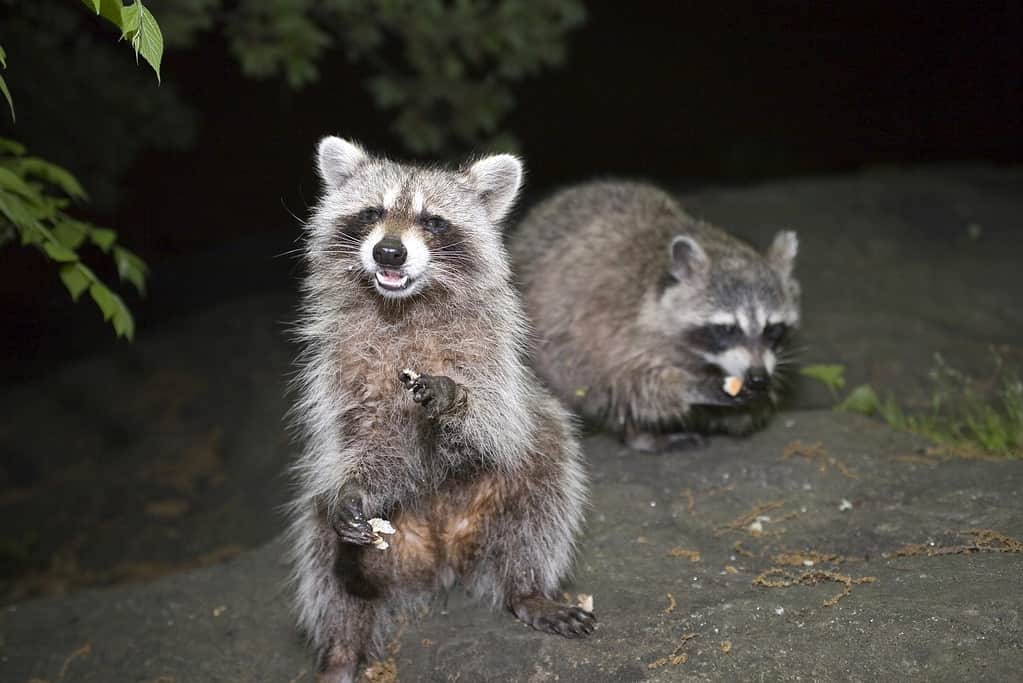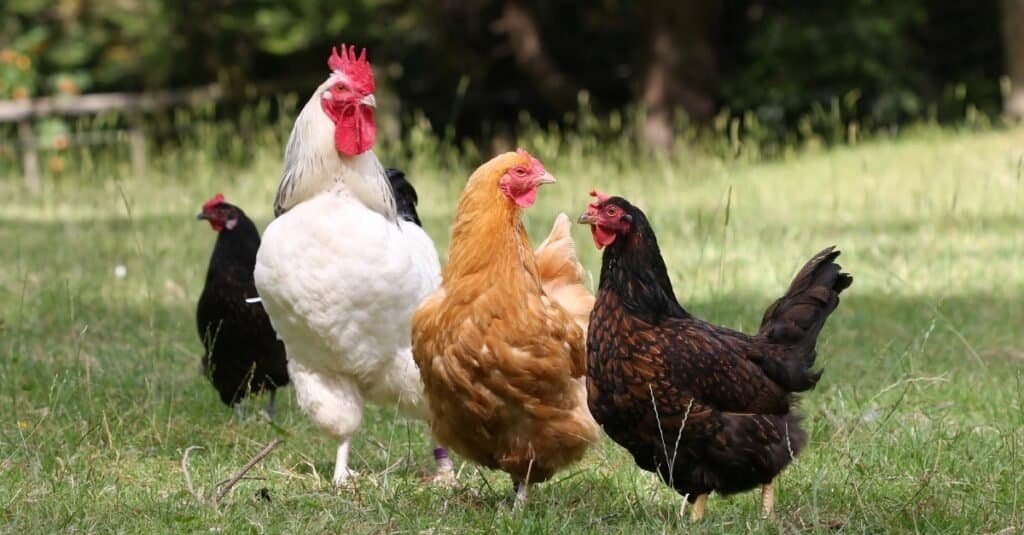Many animals and humans start to drool after eating chocolate, yet they can’t resist eating it.
The problem arises when you discover that only some animals can eat any chocolate. No animal should eat chocolate designed for humans since it may be fatal in one way or another.
Today, we discover which animals can eat chocolate and which can’t. But first, let’s find out why some animals can’t eat chocolate while others can.
Why Can’t Some Animals Eat Chocolate?

Chocolate is extremely toxic to dogs, so be sure to keep it far away from your pet.
©Armadillo Stock/Shutterstock.com
We sometimes feed animals scraps off our tables even though some contain dangerous ingredients and chemicals. Unfortunately, one of these dangerous food scraps is chocolate.
Chocolate, as you may know, comes from cocoa, the bean-shaped seeds from the cocoa plant.
Cocoa has two main chemicals that may cause chocolate toxicity—caffeine and theobromine.
Theobromine is the ultimate culprit, which causes toxicity and damage to an animal’s system. It may accumulate in the animal’s body after consuming too much chocolate.
Unlike humans, animals can’t metabolize theobromine and caffeine compounds. That is because humans have a variant enzyme better at metabolizing theobromine than other enzyme variants found in animals.
Research also indicates that the human liver plays a role in making chocolate less toxic. Additionally, humans have larger livers compared to their body size. The organ is double that of animals our size. Consequently, humans are better at processing poisons than most animals.
If animals consume chocolate in plenty, it releases theobromine, causing poisoning. Theobromine poisoning can occur with as little as 10 grams of chocolate for an animal such as a small dog.
Chocolate toxicosis often affects animals’ digestive and nervous systems to the extent that it becomes fatal. For instance, upon a few hours of ingestion, your pet or animal will show symptoms, including:
- Vomiting
- Hyperactivity
- Diarrhea
If left untreated, theobromine toxicity affects the animal’s nervous system enough to break it down.
The animal starts showing alarming signs such as muscle twitching, tremors, seizures, or even a heart attack. Such signs mean the chocolate toxins are high and present in the animal’s bloodstream.
Your best bet to save the animal is to seek medical assistance from a vet before it turns fatal.

Chocolate toxicosis often affects animals’ digestive and nervous systems to the extent that it becomes fatal.
©iStock.com/igorr1
Can Some Animals Eat Chocolate?

Dark chocolate has the highest theobromine content of all the chocolates.
©iravgustin/Shutterstock.com
While chocolate is toxic to animals, not all animals are in danger when they consume it. How animals react to chocolate depends on different factors. The reaction, for example, can vary according to the animal’s age, size, or health.
Smaller animals will only need small doses to produce an effect compared to large animals. Also, the animal’s health can make it more susceptible to chocolate poisoning if medical conditions weaken it. The same goes for the type of chocolate the animal has consumed since each has varying amounts of theobromine.
Here are the different types of chocolates and their theobromine quantities:
- White chocolate—one milligram per ounce
- Hot chocolate—12 milligrams per ounce
- Milk chocolate—44 to 66 milligrams per ounce
- Baker’s chocolate or cocoa powder—150 to 600 milligrams per ounce
- Dark chocolate – 450 milligrams per ounce
What Kind of Animals Can Eat Chocolate?
Not every animal has fatal reactions from consuming chocolate. Some animals eat chocolate in subtle quantities and remain safe while others may only be able to ingest a minute amount and be safe. Here are some of them.
Rats

A wide range of foods is acceptable to these rats since they are foragers.
©Heiko Kiera/Shutterstock.com
Rats and mice are unique rodents and mammals capable of metabolizing theobromine as efficiently as humans. As a result, these rodents can consume moderate amounts of chocolate, almost the same as humans. But chocolate can harm rats if they consume more than their limits. Specific symptoms will manifest if a rat overeats chocolate, including hypertension, muscle spasms, and even death.
Other ways to know if a rat overeats chocolate include diarrhea, vomiting, internal bleeding, or heart attacks. Dark chocolate particularly contains high levels of theobromine, and when consumed by rats, the chances of sickness are high. The sugar and fats in chocolate could also be a potential risk for obesity and other health hazards in rats.
Rabbits

Too much chocolate for a rabbit can also easily cause pharmacological effects.
©Dan_Koleska/Shutterstock.com
Rabbits are another class of rodents that find chocolate tasty and fun to eat despite the danger. Unfortunately, not all rabbits can do this, and only adult ones can metabolize chocolate safely without side effects.
Even so, rabbits are not far from danger when they consume chocolate. Remember, the harmful ingredients in chocolate can negatively affect metabolic systems and increase cardiovascular activities.
Too much chocolate for a rabbit can also easily cause pharmacological effects, including stimulating the nervous system. As a result, your rabbit can end up experiencing seizures, tremors, cardiac arrests, and possibly die.
Squirrels

Squirrels cannot metabolize the chocolate’s ingredients—theobromine and caffeine.
©Lateman/Shutterstock.com
Squirrels love chocolate and steal whatever amounts they can get their hands on. But this can be fatal since squirrels are more sensitive to chocolate poisoning.
Squirrels cannot metabolize the chocolate’s ingredients—theobromine and caffeine. The adverse effects from both these ingredients can be deadly, but they are not the only cause of concern.
Sugars and artificial sugar substitutes found in chocolates can also cause low blood sugar and liver injury. In addition, the fat in the chocolate could be a source of danger, considering squirrels can get pancreatic inflammation from too much consumption.
Deer

Don’t feed deer excessive amounts of chocolate, but in safe quantities with minimal amounts of theobromine.
©Abigail Marie/Shutterstock.com
A deer is a wild herbivorous animal that feeds on fruits, nuts, and pasture. Since its diet is not balanced, you can find deer eating chocolate from time to time. However, that should not be mistaken as part of its diet but rather an alternative food for the animal rather than starving.
Don’t feed deer excessive amounts of chocolate, but in safe quantities with minimal amounts of theobromine. Excess theobromine is a definite way to upset their tummies and unleash chocolate intolerance. The result could range from diarrhea and vomiting, which cause dehydration.
Cattle

Cows are fed chocolate in a blend of their actual cow feeds.
©Nordroden/Shutterstock.com
Cattle eat chocolate. Chocolate is a must-have additive for dairy and high-quality Wagyu beef production. The cows are not fed chocolate directly but with a blend of their actual cow feeds.
The mix contains a combination of ground chocolate and bakery goods, producing a chocolate-colored corn meal. Dairy cows particularly love this chocolate feed. This blend is mixed into the cow’s regular food to make part of the animal’s balanced diet.
But like humans, not all cows enjoy chocolate products; some enjoy sweeter things than others.
Pigs

Although the pig’s gastrointestinal system is similar to a human’s, pigs experience adverse effects from too much sugar in chocolate.
©Simun Ascic/Shutterstock.com
Pigs can eat a wide variety of foods. Such an appetite means chocolate is part of their diets even though it is unsafe for pigs to eat chocolate. But, of course, there is no control over pigs, and there is a chance they will munch away as much chocolate as possible.
Although the pig’s gastrointestinal system is similar to a human’s, pigs experience adverse effects from too much sugar in chocolate. So, to be safe, pigs are fed chocolate only as an occasional treat rather than a regular part of the diet.
What Animals Can’t Eat Chocolate?
The vast majority of animals react badly to chocolate since they are lactose-intolerant. Additionally, most animals consume more chocolate than expected when given a chance, even if it’s harmful. Here are some animals to keep away from any chocolate, whether inside or near the house.
Dogs

If your dog ingests large amounts of chocolate, it can experience diarrhea and vomiting.
©iStock.com/Anna Pozzi
Unfortunately, even dog owners assume their furry friends can eat almost everything, especially all kinds of food scraps.
But chocolate intolerance is prevalent in dogs due to their indiscriminate eating habits. In particular, chocolate causes various severe illnesses in dogs that consume considerable amounts.
If your dog ingests large amounts of chocolate, it can experience diarrhea and vomiting. More significant amounts of dark chocolate produce more theobromine, and such quantities can cause cardiac arrests and even sudden death.
That means that dogs should not eat chocolate, no matter the kind.
Cats

Chocolate intolerance is common for cats, and you should keep cats clear of chocolate or chocolate products.
Unlike dogs, cats are not fond of chocolates due to their inability to smell or taste the sweetness of the different chocolates. Chocolate affects cats more than dogs. Therefore chocolate intolerance is common for cats, and you should keep cats clear of chocolate or chocolate products. Even a tiny amount could result in cats showing the signs of chocolate poisoning almost immediately.
The results often start with vomiting, diarrhea, and possible hyperactivity in cats. If treatment is not available immediately, the conditions develop further, including thirst, tremors, and other sensitivity disorders. Worse cases result in cat seizures and eventually death.
Raccoons

Once a raccoon ingests too much chocolate, its digestive system fails to break it down, leading to theobromine accumulation.
©iStock.com/eddtoro
Raccoons love pillaging through food scraps, with sugary treats at the top of their list. Their taste buds easily recognize sweet flavors and thus do eat chocolate. But chocolate remains toxic to raccoons.
Once a raccoon ingests too much chocolate, its digestive system fails to break it down, leading to theobromine accumulation. As a result, theobromine toxicity builds up, leading to raccoons experiencing side effects like vomiting, excessive urination, or diarrhea. Excessive theobromine can cause death in raccoons.
Poultry

Like most animals, the likely indication of chocolate toxicity in birds is damage to the digestive system, including vomiting and diarrhea.
©iStock.com/fotoshoota
Poultry, especially chicken, and other birds, eat just about anything they can find or scavenge. But, unluckily, their digestive systems are pretty small, and they are also chocolate intolerant. That means consuming chocolate for such birds is poisonous and can affect the birds quickly and severely.
Like most animals, the likely indication of chocolate toxicity in birds is damage to the digestive system, including vomiting and diarrhea. That often indicates that the chickens still can’t process or digest the chocolate ingredients. Chocolate toxicosis might also affect the bird’s central nervous system and lead to death.
Is There an Antidote for Chocolate Poisoning?
Unfortunately, there is no antidote to counter theobromine poisoning in pets or animals. But there are ways to lessen the effects, especially in the early stages of consumption. Once you notice chocolate poisoning, a veterinarian is the best help for advice on how to treat the animal and restrain it from absorbing more poison.
What to Do When an Animal Consumes Chocolate

The vet will often administer activated charcoal, which draws out the chocolate through vomiting, removing it without endangering the animal.
©SeventyFour/Shutterstock.com
If you suspect your pet or animal has consumed chocolate, look for common symptoms, including vomiting, diarrhea, muscle twitching, or hyperactivity. Confirm this, and call your veterinarian immediately. If the vet is out of reach, take the best action and save the animal.
Typically, the best way to save the animal is to induce vomiting immediately while supplying them with enough water to consume. This cuts back the circulation of theobromine through the animal’s body while preventing the toxicity from reaching its peak.
An animal first aid kit also comes in handy until you get a hold of the veterinarian and get proper medication. The vet will often administer activated charcoal, which draws out the chocolate through vomiting, removing it without endangering the animal.
You can also opt to treat and prevent potential convulsions by issuing the necessary drugs which control the neurological side effects.
Other treatments can include oxygen therapy or intravenous medicine to manage the side effects.
Also, supply the animal with plenty of drinking water for recovery. That reduces the chances of increased toxicity and helps the animal stay hydrated. Finally, check the animal’s progress with frequent monitoring to keep them away from danger.
Key Takeaways
Luckily, plenty of information is available to educate the public on the danger of chocolate to different animals. Still, it pays to know how chocolate reacts and how much it takes to damage an animal’s health and well-being. So, ultimately, keep animals away from chocolate and all products with chocolate as an ingredient.
Thank you for reading! Have some feedback for us? Contact the AZ Animals editorial team.








